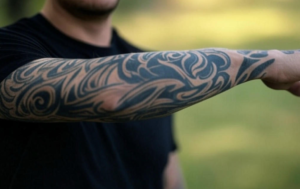Do tattoos, piercings, or beards matter for professional pilot careers?
 Tattoos are increasingly accepted in many professional fields, but in the aviation industry, visibility plays a crucial role. Airlines typically maintain conservative standards regarding visible tattoos. Most major carriers require that tattoos be covered while in uniform, as they strive to present a professional and uniform appearance to passengers. This requirement often extends to tattoos on the hands, neck, and face, which are harder to conceal. While having tattoos doesn’t disqualify a candidate outright, their visibility and content can influence hiring decisions, particularly in airlines with strict appearance policies.
Tattoos are increasingly accepted in many professional fields, but in the aviation industry, visibility plays a crucial role. Airlines typically maintain conservative standards regarding visible tattoos. Most major carriers require that tattoos be covered while in uniform, as they strive to present a professional and uniform appearance to passengers. This requirement often extends to tattoos on the hands, neck, and face, which are harder to conceal. While having tattoos doesn’t disqualify a candidate outright, their visibility and content can influence hiring decisions, particularly in airlines with strict appearance policies.
Similar to tattoos, piercings are subject to airline-specific regulations. Professionalism and uniformity are key in the aviation industry, and excessive or unconventional piercings might be discouraged. Typically, airlines permit standard ear piercings for female pilots, while male pilots might face more restrictive guidelines. Facial piercings, such as nose or eyebrow rings, are generally prohibited or must be removed while on duty. This policy aims to ensure a neat, professional appearance that aligns with the company’s image and passenger expectations.
The issue of beards in aviation is multifaceted. Historically, beards were less accepted in the industry, primarily due to safety concerns. Beards can interfere with the proper fit and seal of oxygen masks, which are crucial in emergency situations. Consequently, many airlines require pilots to be clean-shaven or allow only neatly trimmed mustaches or beards that do not obstruct the mask’s seal. However, there has been a shift in recent years, with some airlines adopting more flexible policies, permitting well-groomed beards as long as they do not compromise safety equipment functionality.
While tattoos, piercings, and beards do matter in professional pilot careers, their impact largely depends on the specific airline’s policies and the nature of the modifications. Aspiring pilots would do well to consider a conservative approach. Maintaining a professional appearance that aligns with industry standards remains crucial for pilot candidates, as it reflects their commitment to safety, uniformity, and the company’s image.

Comments
Do tattoos, piercings, or beards matter for professional pilot careers? — No Comments
HTML tags allowed in your comment: <a href="" title=""> <abbr title=""> <acronym title=""> <b> <blockquote cite=""> <cite> <code> <del datetime=""> <em> <i> <q cite=""> <s> <strike> <strong>